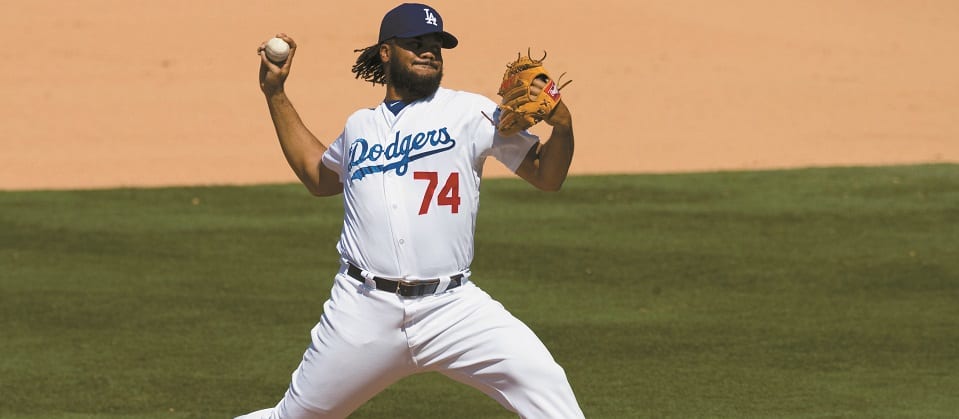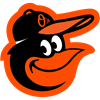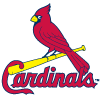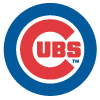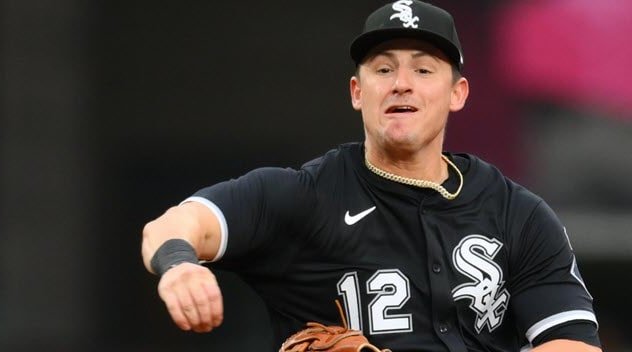Whether you've played in keeper leagues before, or are joining an existing league for the first time this season, the one wild card that can make a total mess of all your preparation is inflation. In re-draft leagues, most players will end up with salaries around their projected auction values. In keeper leagues, particularly ones with structures that are very prospect-friendly, projected auction values are only useful for letting you know what pitifully small returns you can expect to get on your auctions buys. If you aren't ready for what's to come, participating in an auction with high inflation can make you question your life choices, or at least your sobriety, when you find yourself throwing out bids that might have seemed absurd just a few hours before.
The thing is, though, you still have to spend that money. While paying inflated prices for stars is bad, it's even worse to sit on the sidelines and not buy stars at any price, instead trying to fill your roster with players getting "reasonable" salaries. That's a sure-fire way to leave a large chunk of your budget sitting on the table unused, and to ensure that you aren't competing for a title this season.
Before I take a look at the best ways to navigate the inflation minefield, let's take a look at what inflation actually is, and how to calculate it for your own league.
Calculating Your Base Inflation Rate
To calculate the base inflation rate, add up the total salary
Whether you've played in keeper leagues before, or are joining an existing league for the first time this season, the one wild card that can make a total mess of all your preparation is inflation. In re-draft leagues, most players will end up with salaries around their projected auction values. In keeper leagues, particularly ones with structures that are very prospect-friendly, projected auction values are only useful for letting you know what pitifully small returns you can expect to get on your auctions buys. If you aren't ready for what's to come, participating in an auction with high inflation can make you question your life choices, or at least your sobriety, when you find yourself throwing out bids that might have seemed absurd just a few hours before.
The thing is, though, you still have to spend that money. While paying inflated prices for stars is bad, it's even worse to sit on the sidelines and not buy stars at any price, instead trying to fill your roster with players getting "reasonable" salaries. That's a sure-fire way to leave a large chunk of your budget sitting on the table unused, and to ensure that you aren't competing for a title this season.
Before I take a look at the best ways to navigate the inflation minefield, let's take a look at what inflation actually is, and how to calculate it for your own league.
Calculating Your Base Inflation Rate
To calculate the base inflation rate, add up the total salary for all the protected players and subtract it from everyone's starting auction budgets. This gives you the total amount of money available to be spent at the auction. Then, calculate the projected values for all keepers, and subtract that from the initial starting budgets. This gives you the total amount of value available to be bought at the auction. Divide the remaining money by the remaining value, and you have your inflation rate.
In last year's Staff Keeper League, for example, the 18 teams headed to the virtual table with $2496 left to spend from their base $260 budgets ($4,680 total, less penalties for buying out long-term contracts). However, there was only $1586 worth of players to spend it on, producing a genuinely horrific inflation rate of 57.4 percent. That led to some salaries that, at first glance, look obscene. Madison Bumgarner went for $57 (which worked out really well for me, thanks for asking), and Clayton Kershaw got protected as a keeper for $74.
Calculating Inflated Salaries
You're not quite done, though. While determining the base inflation rate for your league is helpful, it doesn't actually tell you what to expect at the auction. Inflation doesn't hit all players equally. In a league with 15 percent inflation, a $1 player doesn't go for $1.15. He's still a $1 endgame buy, and all those nickels get saved up and thrown at someone higher up the salary scale. What's more, different people at the auction table will have different targets in mind when it comes to where their nickels are going, making every league's auction unique. Each of your competitors has different roster needs and different strategies, and different leagues have different histories and overall trends when it comes to closer pricing or whatever, so there's no clean way to determine how those various market forces are going to come into play once Kenley Jansen is put up for bid.
Figuring out the effective inflation rate on a specific player, as opposed to the overall base rate, is far more art than science. In the heat of the moment in an auction, you often have to trust your gut (or evaluate the dwindling talent pool) to decide whether to go one more dollar on a player whose bidding is already well past what he's "worth". However, I have jury-rigged a tool that does a reasonable job of estimating what the effects of inflation might be. It won't perfectly predict an inflated salary, of course, but it will give you a ballpark estimate of what to expect, which is still important information to have.
If you're arithmaphobic, or working in Excel makes you break out in hives, you may want to just skip this next bit and instead download RotoWire's draft software, which automatically factors in inflation on projected salaries.
My formula for producing inflation-driven salaries is this:
IDS = PV x (1 + (IR + (IR*(1-IR^SD))))
...with IDS being the inflation-driven salary, PV being the projected value of the player, IR being the base inflation rate and SD being how many standard deviations from the mean that player's salary is.
Essentially, the formula increases the 'IR' portion exponentially the further from average a player is. A completely average player (SD of 0) will only have their salary hit by the base inflation rate, since the rest of the formula will get reduced to zero (starting from the back, any number to the power of 0 is 1, and 1 minus 1 is zero, and anything multiplied by 0 is 0). The better they are, however, the more additional inflation will hit them.
If your head is spinning, maybe an example will help. Let's take a look at Mike Trout.
The best player in the world has a projected value of $42 (actually, $41.95, using a 67/33 hitter/pitcher spending split) in that Staff Keeper League format, which is standard 5x5 roto. His PV would be 41.95, and we'll use the 2017 inflation rate of 57.4.
Incidentally, that 57.4 percent base rate last season was the worst inflation we've ever seen in a league that's been running since 2003. Three years ago, the inflation rate was only 44.3 percent, which was still pretty gross but at least had been fairly steady and predictable for a while. It's risen dramatically since 2015. There seemed to have been a league-wide shift in how elite prospects were valued and prized – and how long their long-term deals have been after their rookie contracts expired – starting about 5-6 years ago, and it's come home to roost. We won't be holding the auction this season until early April, but I expect more of the same. Players like Charlie Blackmon, Freddie Freeman and Corey Kluber will see their existing deals expire and join the player pool, but the likes of Ronald Acuna (on a $0 minor-league deal for now), Luis Severino ($3) and Cody Bellinger ($3) are a long way from ever being up for bid.
Trout's standard deviation from the mean is a little trickier to calculate, but fortunately Excel has a STDEV function you can use. Just create or import a list of all the players with positive projected values, no matter how small, and STDEV the whole list of values. In this case, the standard deviation of all the projected values is about 8.75, while the average (the mean) is $11.36. Subtract 11.36 from 41.95, divide by 8.75, and voila! Trout's SD is 3.50. Plugging those numbers into the formula, we find that Trout's estimated inflation-driven salary at the auction table would be... $87.
That sounds impossible, and maybe it is. Who would use over a third of their budget on one guy? The league's never seen an $80 player, much less one in the high 80s. It has seen $70 players, though, and they weren't Mike Trout. Trout won't hit the free-agent market until 2020, so it'll be a couple of seasons before that can be put to the test.
Let's look at a less extreme example. RotoWire has actually put together a couple of other 18-team 5x5 staff keeper leagues for those who missed out on the original, and one of them started up just last season. With only one season worth of keepers on people's rosters, inflation will be far lower. Using 12 percent inflation as a plausible possibility, Trout's estimated auction salary is now $52, which is a bit funny considering he went for $57 right out of the gate last year, part of a "pre-flation" bidding frenzy which made the initial auction somewhat hectic. If he gets thrown back, and the league shows a bit more restraint now that the rookie GMs have a season under their belt to temper their enthusiasm, $52 seems well within reason.
Remember, the purpose of all that fancy math is not to nail down exactly what a player's salary will be during an auction. It's to prepare you for what might happen at the auction, so you won't be caught by surprise when the bidding shoots way past what the player's "real" value is.
Selecting Your Targets
Once you've figured out your league's inflation rate, and seen what impact it might have on the salaries of top stars, you'll need to decide which players are actually worth chasing.
Now, if there's a specific position or stat category you need to fill, and only a small number of players who can fill it, you are entirely justified in going to the wall for one of those players. If you need an ace, and Kluber comes up for bid, do what you have to do. If you're just looking for production and relative value wherever you can find it, however, there's are certain types of players who make for better targets than others. The question you have to ask yourself when bidding over the estimated value on a player is, do they have a chance of actually earning their salary?
I don't mean a good chance. I mean any chance at all.
A while ago, Chris Liss conducted a fun little exercise in which he compiled the stats on what would have been the greatest fantasy baseball seasons in history, if fantasy baseball had existed as long as baseball itself. The names you'd expect to be on it are there (Ruth, Cobb, Hornsby, etc.) but among the modern players, Larry Walker's 1997 season stands out. A .366 average in a ton of at-bats, 49 home runs, 33 steals, 130 RBI and 143 runs, and that incredible season, aided by Coors Field at the height of its offense-boosting powers, was still only worth $66. Alex Rodriguez's 54-HR 2007 season? Only worth $61. Alfonso Soriano's near-40 HR/40 SB 2002 season? $53.
Now, those values were calculated based on a 12-team only format, but you get the general idea. For a player to earn at least $50, he's going to have to do something fairly extraordinary, if not downright historical.
Even in leagues where inflation isn't quite as extreme as the Staff Keeper League, it's easy to get sucked into a dizzying bidding war. Keeping in mind the question of whether a player can possibly earn back that salary or not can save you from making a bid you'll regret later.
The problem is, you have to spend your money somewhere, and anybody good is going to be too expensive. So who should you target? Again, it comes back to that question of what's possible. Your targets in inflation-plagued leagues should be players who actually have a chance of earning back their inflated salary, and the higher the chance, the better. Certain kinds of players, for various reasons, tend to fall into the sweet (or at least less bitter) spot of getting bid higher than their projections, but lower than their vaguely plausible production ceiling, and these are the players at whom you should be looking.
Below I've listed one hitter and one pitcher from each division, along with their projected auction salary in a 12-team mixed 5x5 re-draft format, to give you an idea of the kinds of players and factors to look for in "inflation-buster" targets.
AL East
Josh Donaldson, Tor (PV $24): There's some injury risk built into this salary, but for the most part it represents a 32-year-old player whose skills are beginning to decline a little. He is only three years removed from an MVP campaign, however, and the lineup around him in Toronto could be good enough to get Donaldson back up among the league's RBI leaders. There's also the question of how long he'll remain in Toronto. A midseason deal to a better club could strap a rocket to a healthy Donaldson's numbers.
David Price, Bos (PV $14): The lefty wasn't healthy last year, and wasn't his old dominant self two years ago, but Price was one of the best pitchers in the game as recently as 2015. His name could send his bidding skyward even beyond inflation concerns, but if he regains his form he's capable of matching Chris Sale pitch for pitch (and dollar for dollar in value) at the top of the Red Sox rotation.
AL Central
Miguel Cabrera, Det (PV $14): The future Hall of Famer is coming off the worst season of his career, and his 38-HR campaign in 2016 is starting to look like it might have been a dead cat bounce. What if Cabrera has his dead cat bounce season in 2018, though? Even in his age-35 season, is another .300-30-100 or better line really so improbable?
Carlos Carrasco, Cle (PV $26): He finally got healthy last season and produced the best campaign of his career, and he turns 31 just before Opening Day. Those are normally signs you should stay away from a pitcher rather than expect a repeat, but the fact of the matter is, we don't actually know what Carrasco's ceiling looks like. He could easily have another gear beyond what he produced in 2017.
AL West
Robinson Cano, Sea (PV $14): Cano hasn't had an SLG above .454 in three of the last four seasons and is clearly in the decline phase of his career, but in 2016 he cranked out a .298/.350/.533 line with a career-high 39 home runs. If he's got one more campaign like that left in him, he could be a steal even at an inflated salary.
Shohei Ohtani, LAA (PV $15): Nobody is a bigger question mark than Ohtani this season, either in terms of his performance or his workload, and that volatility creates an opportunity for value. If his K/9 rate is closer to the double digits he was posting in Japan, as opposed to the 9.2 we currently have him projected for, he could deliver Sale-like numbers on a per-start basis.
NL East
Daniel Murphy, Was (PV $10): Murphy could be this season's J.D. Martinez, a stud player with preseason injury issues that bring his salary down too far. The Nats still haven't completely ruled out the idea of their second baseman being ready by Opening Day, which suggests he won't miss much time even if he does begin the season on the DL, and a reasonably healthy Murphy in the heart of that Washington batting order is capable of competing for a batting title while still supplying strong power numbers.
Jake Arrieta, Phi (PV $12): His late signing and declining fastball velocity are going to have a lot of people shying away from Arrieta, and while the chances of him repeating his Cy Young numbers from 2015 are very slim, even a return to his 2016 level could make him a strong buy. He's also joining a young Phillies team on the upswing, and an offense led by Rhys Hoskins and Carlos Santana could provide him with the kind of run support he was used to with the Cubs.
NL Central
Ryan Braun, Mil (PV $16): He hasn't played more than 140 games since 2012, and the Brewers' sudden outfield depth will bump Braun down the defensive spectrum to first base. That could be a blessing if it helps keep him on the field, though, and the 34-year-old still cranked out a .305/.365/.538 line with 30 homers in 2016 despite missing 27 games. That level of production, in this offense and in this ballpark, could lead to some late-career fireworks.
Yu Darvish, ChC (PV $15): Darvish's postseason struggles could have some people thinking he's damaged goods, but he's now three years removed from his Tommy John surgery and might be ready to return to 2013 form. With the Cubs offense backing him, the 31-year-old could also be ready to set a new career high in wins, topping the 16 he managed in his first North American campaign.
NL West
Paul Goldschmidt, Ari (PV $33): I've already said my piece about the possible impact of the humidor at Chase Field, and I'm not flinching away now. If your leaguemates overreact to the impact it might have, Goldschmidt could well provide you with MVP numbers at something less than the going rate.
Madison Bumgarner, SF (PV $24): Last year's injury was a fluke, but it's one that might make some bidders wary since it technically was an arm injury. Bumgarner is still an elite pitcher in his prime, and while the Giants don't necessarily project to be competing for a playoff spot, it is an even-numbered year and they did bring in some big-name hitters over the offseason, so run support may not be the issue it was in 2017 for the lefty.


